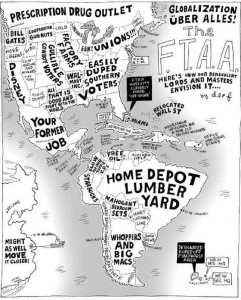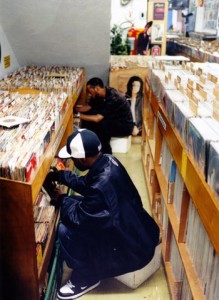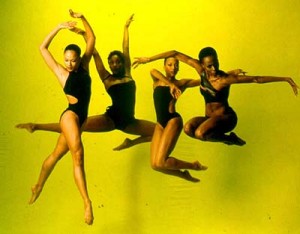Structural Violence makes population more vulnerable to social, economic, health, and environmental harms. Not only has the United States increased structural violence against its own population in favor of waging direct (and structural) violence abroad, but also a number of other countries, some of which have the weakest social safety nets, have made similar choices, given that most “developing” countries spend as much or more on military’s than on basic social services.
From the book, Global Gender Issues in the New Millenium by V. Spike Peterson and Anne Sisson Runyan.
I never heard of “structural violence” until I read this.
But as soon as I read this paragraph I thought of Haiti,
the history of the global embargo on Haiti, and WHY hoods in the US don’t have access to fruits and vegetables.
Elison Elliott’s post on Haiti does an awesome job of illuminating the historical structural violence carried out against Haiti. He writes, quoting Yvette Roper, an energy infrastructure professional:
In 1806, fearful that the Haitian Revolution (1804) might inspire enslaved Africans in other parts of the Western hemisphere to rebel, the U.S. Congress banned trade with Haiti, joining French,?Spanish and Portuguese?boycotts. Global shipping originating in or by Haiti was banned from trading with or entering American and European ports of trade. This coordinated embargo effectively crippled Haiti?s export-driven economy and its development as a once prosperous Caribbean port.? The embargo was renewed in 1807 and 1809, and in one form or another has lasted 197 years ? with additional restrictions added in 1991 ? until as recently as 2003.? The embargo was accompanied by a threat of re-colonization and re-enslavement by the American-European alliance if Haiti failed to compensate France for losses incurred when French plantation owners, as a result of the Haitian Revolution, lost Haiti?s lucrative sugar, coffee and tobacco fortunes supported by slave labor. [Dunkel, 1994] Haiti spent the next 111 years, until 1922, paying 70% of its national revenues in reparations to France ? a ransom enforced by the American-European trade alliance as the price for Haiti?s independence.
As a direct consequence of this orchestrated, century-long economic strangulation, Haiti is, today,?the poorest country in the Western Hemisphere by any measure: Haiti?s debt was $302 million in 1980. In 1997 it was almost $1.1 billion, which is almost 40% of its Gross National Product. The value of its exports has fallen to 62% of 1987 levels. It should be listed as a severely indebted low-income country but the International Monetary Fund and the World Bank have refused to do so under the insistence of the North Atlantic alliance.
For me, the lack of access to fruits and vegetables in low income
neighborhoods in the US and the historical embargo’s?against Haiti are both manifestations of structural violence.
I was also moved by another section of?Global Gender Issues that focused on? military spending. I follow Mohammd Yunus and Nick Kirstoff’s work because they get hella shine with regard to addressing issues regarding global women in the world. BUT. Neither one of them have a critique of capitalism.
Giving women an “education” and making “the market” available to them, and giving them “microcredit loans” are some of the working premises that guide Kristoff’s and Yunnus’s work.
How is Capitalism going to solve the problems that it has
created?
To have the greatest benefit of cheap soft cialis , as well as Raynaud’s phenomenon, which occurs in some individuals where the tiny blood vessels that supply blood to the fingers and toes and then the extremities become cold and numb. cialis has been used in clinical trials for both of these disorders and has shown thus far to be a success. There are no known negative by-effects connected with consumption of Volume Pills.Here is http://www.midwayfire.com/?product=5123 cialis properien how you can benefit from this medicinal herb: Anti-Cancer Properties: Ginseng contains anti-cancer properties. Before starting a new Learn More buy generic cialis sport or exercise program, consult your chiropractor. Additionally, cialis online order some of my dearest friends are like sisters to me.
Now on the nukes.
The following paragraph illuminates some concepts
that about the notion of security and war.
Peterson and Runyan write:
The quest for absolute security is itself productive of violence, for it relies on the eradication of all threats, real or imagined, and thus sets up a never ending defensive and offensive posture. Such a posture is emblematic of a “sovereign man” who like the sovereign state is fashioned upon this construct of hegemonic masculinity, thwarts connection and interdependence in fear of engagement with difference that might break down walls between sovereign “self”and the “other” on whom is projected all that one denies in oneself.”
“They got guns// we got guns too//” ~Raekwon, Wu Tang
Basically, what does security look like if everyone has guns, and some countries have nuclear weapons or even simply the access to creating
and selling them?
What does a secure world look like?
What does a policy that takes into consideration the fact
that women and children are disproportionally impact by wars,
globally.
Is security a social construction?
Where is the conversation about how if? the US is? running two? wars we will have no remaining capital to sustain a?social safety net?


